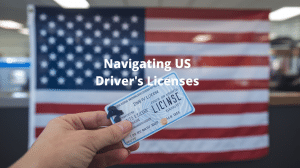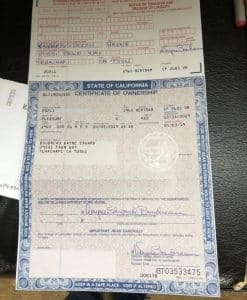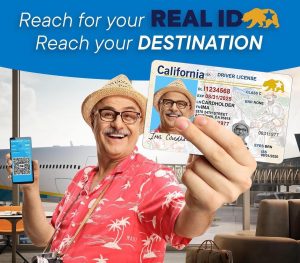
Are you dreaming of hitting the open road as a commercial truck driver but feeling overwhelmed by the process of obtaining your CDL license? 🚛💨 You’re not alone! Many aspiring drivers find themselves lost in a maze of regulations, tests, and requirements. But don’t let that deter you from pursuing your career goals!
Imagine cruising down highways, exploring new cities, and enjoying the freedom of the trucking lifestyle. It’s all within reach, and we’re here to show you the easiest way to obtain your CDL license. Whether you’re worried about passing the knowledge test, concerned about a past felony conviction, or simply unsure where to start, we’ve got you covered. In this comprehensive guide, we’ll walk you through every step of the process, from acing your written exam to finding the right training school.
So, buckle up and get ready to learn about knowledge and skills examinations, medical requirements, training options, and much more. We’ll even dive into online services and state-specific information to ensure you have all the tools you need to succeed. Let’s hit the road to your new career together! 🛣️🚚
Knowledge (Written Test) and Skills Examinations
Written Test
The journey to obtaining your CDL license begins with the written test, which assesses your knowledge of commercial driving regulations and safety practices. This test is crucial for ensuring that future commercial drivers have a solid foundation of theoretical knowledge before they hit the road.
Key Components of the Written Test
-
Traffic laws
-
Safe driving techniques
-
Vehicle operation and maintenance
-
Hazardous materials handling (if applicable)
To prepare for the written test, consider the following study methods:
-
Review the CDL manual thoroughly
-
Take practice tests online
-
Attend a CDL preparation course
-
Use flashcards for key concepts
| Test Section | Number of Questions | Passing Score |
|---|---|---|
| General Knowledge | 50 | 80% |
| Air Brakes | 25 | 80% |
| Combination Vehicles | 20 | 80% |
Skills Examination
After passing the written test, you’ll move on to the skills examination, which is a hands-on assessment of your ability to operate a commercial vehicle safely.
Three-Part Skills Test
-
Vehicle Inspection: Demonstrate knowledge of vehicle components and safety checks
-
Basic Control: Show proficiency in maneuvering the vehicle in confined spaces
-
Road Test: Prove your ability to drive safely in various traffic situations
To excel in the skills examination, consider these preparation tips:
-
Practice vehicle inspection routines regularly
-
Master basic maneuvers like straight line backing and offset backing
-
Gain experience driving in diverse traffic conditions
-
Consider enrolling in a professional truck driving school for hands-on training
Remember, thorough preparation for both the written test and skills examination is key to successfully obtaining your CDL license. With dedication and practice, you’ll be well on your way to becoming a licensed commercial driver.
How do I get a CDL license with a felony conviction?

The easiest way to obtain a CDL license with a felony conviction is to be honest and upfront about your criminal history. While having a felony doesn’t automatically disqualify you, it may limit your job options. Focus on completing all required training, passing tests, and obtaining necessary medical certifications. Some companies are willing to hire felons, especially if your conviction is not recent or related to driving offenses.
Medical Examination
Medical Examination
To obtain a Commercial Driver’s License (CDL), you must pass a comprehensive medical examination. This crucial step ensures that drivers are physically fit to operate large commercial vehicles safely. The examination typically includes:
-
Vision and hearing tests
-
Blood pressure and pulse rate checks
-
Urinalysis for underlying health conditions
-
Physical examination of major body systems
Here’s a breakdown of the key components of the medical examination:
| Component | Description | Frequency |
|---|---|---|
| DOT Physical | Comprehensive health check | Every 24 months |
| Vision Test | Ensures adequate eyesight | Each physical |
| Hearing Test | Verifies ability to hear warnings | Each physical |
| Drug Test | Screens for illegal substances | Random and pre-employment |
It’s essential to prepare for your medical examination by:
-
Gathering your medical history
-
Bringing a list of current medications
-
Fasting if required for blood tests
-
Wearing comfortable clothing for the physical exam
Truckers Against Trafficking (TAT)
While not directly related to the medical examination, it’s worth noting that many CDL programs now include training on recognizing and reporting human trafficking. Truckers Against Trafficking (TAT) is a non-profit organization that educates and empowers members of the trucking industry to combat human trafficking. As part of your CDL journey, you may encounter TAT training, which focuses on:
-
Identifying signs of human trafficking
-
Proper reporting procedures
-
The role of truckers in preventing this crime
Truck Driver Training Schools
Truck Driver Training Schools
To obtain your CDL license efficiently, enrolling in a reputable truck driver training school is crucial. These schools offer comprehensive programs designed to prepare you for both the written and skills tests required for CDL certification.
A. Entry-Level Driver Training (ELDT)
As of February 7, 2022, the Federal Motor Carrier Safety Administration (FMCSA) mandates Entry-Level Driver Training (ELDT) for all new CDL applicants. This regulation ensures that aspiring truck drivers receive standardized, high-quality training before obtaining their license.
Key aspects of ELDT include:
-
Theory instruction
-
Behind-the-wheel training
-
Range and public road experience
Here’s a breakdown of the ELDT requirements:
| Component | Description | Minimum Hours |
|---|---|---|
| Theory | Classroom or online instruction | No minimum |
| Range | Closed-course driving practice | No minimum |
| Public Road | Actual driving experience | No minimum |
While there are no minimum hour requirements, students must demonstrate proficiency in all areas before completion. Choosing an FMCSA-registered training provider is essential to ensure compliance with ELDT regulations.
Benefits of attending a truck driver training school:
-
Structured curriculum tailored to CDL requirements
-
Experienced instructors with industry knowledge
-
Access to modern equipment and facilities
-
Job placement assistance upon graduation
By investing in quality training through a reputable truck driver school, you’ll significantly increase your chances of passing the CDL exams and launching a successful career in the trucking industry.
Bureau of Motor Vehicles
Locating Your Local BMV
The Bureau of Motor Vehicles (BMV) plays a crucial role in obtaining your CDL license. To find your nearest BMV office:
-
Visit the official state BMV website
-
Use the “Office Locator” tool
-
Enter your zip code or city
-
Review the list of nearby offices
Services Offered at BMV
BMV offices provide various CDL-related services:
| Service | Description |
|---|---|
| Written Tests | Take knowledge exams for different CDL classes |
| Vision Screening | Mandatory eye test for CDL applicants |
| License Issuance | Receive your CDL after passing all requirements |
| Fee Payment | Pay for application, testing, and licensing fees |
Scheduling Your Visit
To streamline your BMV experience:
-
Check online for appointment availability
-
Gather all necessary documents beforehand
-
Arrive early to allow time for processing
Document Checklist
Ensure you bring:
-
Proof of identity (e.g., passport, birth certificate)
-
Social Security card
-
Proof of residency (e.g., utility bill, lease agreement)
-
Current driver’s license
-
Medical Examiner’s Certificate
By preparing thoroughly for your BMV visit, you’ll expedite the CDL licensing process. Next, we’ll explore the convenient online services available for CDL applicants, which can save you time and streamline your application process.
Online Services
Online CDL Services
In today’s digital age, many states offer convenient online services for CDL applicants. These services streamline the licensing process, saving time and reducing the need for in-person visits. Here’s an overview of common online CDL services:
Available Online CDL Services
-
Pre-application submission
-
CDL manual access and practice tests
-
Appointment scheduling
-
Fee payments
-
License renewal
-
Address changes
Benefits of Online CDL Services
| Benefit | Description |
|---|---|
| Convenience | Access services 24/7 from anywhere |
| Time-saving | Avoid long wait times at DMV offices |
| Cost-effective | Reduce travel expenses and time off work |
| Efficiency | Complete processes faster with instant submissions |
Tips for Using Online CDL Services
-
Ensure you have a stable internet connection
-
Gather all necessary documents before starting
-
Double-check all information before submitting
-
Keep copies of online transactions for your records
While online services greatly simplify the CDL process, some steps still require in-person visits, such as skills tests and medical examinations. Check your state’s specific requirements to determine which services are available online.
With these online tools at your disposal, obtaining and maintaining your CDL has never been easier. Next, we’ll address some frequently asked questions about the CDL licensing process to further clarify any concerns you may have.
FAQs
Common Questions About CDL Licensing
What are the age requirements for a CDL?
-
Minimum age for intrastate CDL: 18 years old
-
Minimum age for interstate CDL: 21 years old
How long does it take to get a CDL?
The time to obtain a CDL varies depending on several factors:
| Training Type | Duration |
|---|---|
| Full-time program | 3-8 weeks |
| Part-time program | 2-6 months |
| Self-study | Varies (typically longer) |
Can I get a CDL with a DUI on my record?
While it’s possible to get a CDL with a DUI, it can be challenging:
-
Most states require a clean driving record for the past 3-5 years
-
Some employers may have stricter policies
-
You may need to complete additional requirements or wait for a specific period
What types of CDL licenses are available?
There are three main types of CDL licenses:
-
Class A: For combination vehicles (tractor-trailers)
-
Class B: For single vehicles over 26,000 lbs
-
Class C: For vehicles transporting hazardous materials or 16+ passengers
How much does it cost to get a CDL?
Costs can vary widely depending on location and training type:
| Expense | Typical Cost Range |
|---|---|
| CDL permit fee | $50 – $100 |
| CDL skills test | $100 – $250 |
| CDL training program | $3,000 – $7,000 |
Now that we’ve covered some common questions about CDL licensing, let’s explore the various online services available to simplify the process.
Find Information

Reliable Sources for CDL Information
To find accurate and up-to-date information about obtaining a CDL license, it’s crucial to consult reliable sources. Here are some trustworthy resources:
-
Federal Motor Carrier Safety Administration (FMCSA)
-
State Department of Motor Vehicles (DMV) websites
-
Professional trucking associations
-
Accredited truck driving schools
Comparison of Information Sources
| Source | Pros | Cons |
|---|---|---|
| FMCSA | Official federal regulations, comprehensive | May be complex for beginners |
| State DMV | State-specific requirements, local contact | Varies by state, may not cover all aspects |
| Trucking Associations | Industry insights, networking opportunities | May require membership |
| Driving Schools | Practical advice, hands-on experience | Potential bias towards their programs |
Utilizing Online Resources
The internet offers a wealth of information for aspiring CDL holders. Consider these online platforms:
-
Official government websites (ending in .gov)
-
CDL forums and discussion boards
-
YouTube channels dedicated to trucking
-
Online CDL practice tests and study guides
By leveraging these resources, you can gather comprehensive information about the CDL licensing process, requirements, and career opportunities in the trucking industry. Remember to cross-reference information from multiple sources to ensure accuracy and stay informed about any recent changes in regulations or procedures.
Quick Information
Key CDL License Requirements
-
Age: Must be at least 18 for intrastate driving, 21 for interstate
-
Valid driver’s license from your home state
-
Clean driving record
-
Pass DOT physical examination
-
Pass written and skills tests
CDL Classes and Endorsements
| Class | Description | Common Vehicles |
|---|---|---|
| Class A | Combination vehicles, 26,001+ lbs GVWR | Tractor-trailers, truck and trailer combinations |
| Class B | Single vehicles, 26,001+ lbs GVWR | Straight trucks, large buses |
| Class C | Vehicles under 26,000 lbs GVWR with specific endorsements | Small HAZMAT trucks, passenger vans |
Application Process Overview
-
Obtain CDL manual from local DMV
-
Study for and pass the written test
-
Get a Commercial Learner’s Permit (CLP)
-
Complete required training (varies by state)
-
Pass the skills test (vehicle inspection, basic control, road test)
-
Pay applicable fees and receive your CDL
Now that you have a quick overview of the CDL license requirements and process, let’s dive into the specifics of finding information about CDL regulations in your state.
State Information
State-Specific CDL Requirements
Each state in the United States has its own specific requirements for obtaining a Commercial Driver’s License (CDL). While the federal government sets general guidelines, individual states may have additional regulations or processes. Here’s a breakdown of what you need to know:
Common State Variations
| Aspect | Potential State Variations |
|---|---|
| Age Requirement | 18-21 years old |
| Residency Proof | Different acceptable documents |
| Endorsements | Additional state-specific endorsements |
| Fees | Varying costs for application and testing |
| Waiting Periods | Different timeframes between permits and tests |
Finding Your State’s Information
To obtain accurate and up-to-date information for your state:
-
Visit your state’s Department of Motor Vehicles (DMV) website
-
Look for a dedicated CDL section
-
Check for state-specific manuals or guides
-
Contact local DMV offices for clarification
Reciprocity and Transfer
-
Some states have reciprocity agreements, allowing easier transfer of CDLs
-
Requirements for transferring an out-of-state CDL can vary
-
Always check with your new state of residence for transfer procedures
Understanding your state’s specific requirements is crucial for a smooth CDL acquisition process. Be sure to thoroughly research and comply with all state-level regulations in addition to federal requirements.
Obtaining a CDL license is a crucial step for those looking to start a career in commercial driving. The process involves several key components, including passing knowledge and skills examinations, undergoing a medical examination, and potentially attending truck driver training schools. It’s important to note that even individuals with felony convictions may be eligible for a CDL, though specific requirements may vary by state.
To streamline the process, prospective drivers should take advantage of online services offered by their state’s Bureau of Motor Vehicles and consult state-specific information. By thoroughly researching the requirements, preparing for examinations, and utilizing available resources, aspiring commercial drivers can navigate the path to obtaining their CDL with confidence. Remember, investing time and effort in proper preparation will not only help you secure your license but also set a strong foundation for a successful career in the trucking industry.






